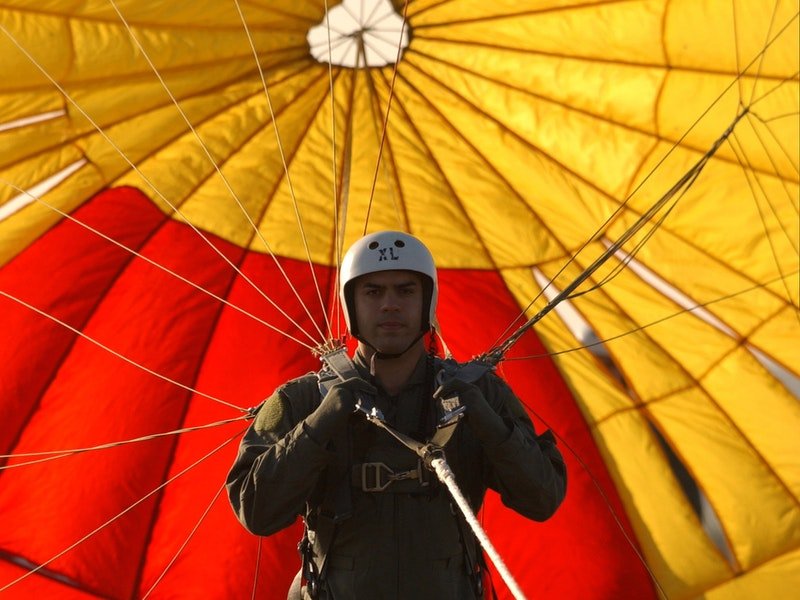The more you skydive, the closer you will feel to nature. Freefalling at such heights and seeing your surroundings’ vast beauty can build an incredible bond. As your relationship with nature grows, so does your carbon footprint, making many flights up to your favorite jump spots. So, how does skydiving affect the environment?
You probably won’t meet many sports communities that have such an appreciation for the natural world. Skydiving is all about perspective and discovering natural highs within the beauty of nature. So it’s such a conflicting thought that every time you skydive, you contribute to damaging the environment.
Let’s take a closer look at how skydiving affects the environment. We will discuss ways skydivers can help the environment. We will also take a look at some of the positive things skydiving companies are doing to make a change.
Is skydiving bad for the environment?

The sad truth is that skydiving is bad for the environment. Every flight that takes off for a loop of the drop zone creates greenhouse gas emissions. Skydiving is often in lists of the most environmentally damaging sports and hobbies, usually at number one. Each flight up to altitude burns through a crazy amount of fossil fuel for such a short trip. The fact that many of these trips are carrying just 3 or 4 skydivers makes its impact worse.
Unlike the fast-growing electric car industry, there are currently no electric planes in commercial production. So despite so many skydivers deeply caring about climate change and the worrying state of the environment, every jump they take is making a negative impact. While base jumping cuts the carbon footprint down significantly, it’s a version of the sport very few people can do. Jumping from a natural or artificial object adds incredible dangers.
There is the hope of electric or hybrid-electric planes being available within the next decade. Several of the big names in aviation are pushing hard to develop the world’s first fleet of electric aircraft. Nasa, Airbus, MagniX, and Eviation all have an electric plane in the early stages of production. And while electric planes carrying large numbers of commercial passengers seem far off, small commercial and private planes powered by electricity are starting to look like a real possibility.
NASA’s X-57 Maxwell electric plane is said to be close to making its first flight and looks to be perfect for skydiving. Electric planes would not only revolutionize the carbon footprints of skydiving and aviation as a whole, but it could drastically reduce fuel costs by as much as 90%, reduce maintenance times and fees, and cut noise by as much as 70%.
How does skydiving affect the environment?

It can be argued that a trans-Atlantic commercial flight that travels at much greater distances at much higher altitudes does far more damage to the environment than a skydivers’ Cessna 182, making several 25-minute flights to 10,000 feet each day. However, two wrongs don’t make a right. The small number of passengers on each skydiving flight, and the fact those flights are purely for pleasure, sometimes make it hard to justify skydiving as a sport or hobby.
Every skydive you take means a short flight up to altitude but also means burning fossil fuels. The burning of that fuel increases CO2 emissions in the atmosphere. These emissions increase the greenhouse gases in our environment and contribute to the rise in global temperatures. These rising temperatures are responsible for the melting polar caps, rising sea levels, and volatile weather and natural disasters. To make matters worse, these extreme weather conditions and devastating disasters hit those most vulnerable the hardest.
As a one-off tandem skydiver, skydiving won’t make a dramatic impact on your lifetime carbon footprint. But as a regular skydiver making multiple jumps each year, it’s essential to be conscious of your skydiving impact and how it can affect the environment.
What impact does skydiving have on the environment?

Let’s try to put the environmental impact of a skydive into figures and give it some context.
A Cessna 182 (the most common skydiving plane) holds four skydivers and tends to reach a jumping altitude of 10,000 feet in 10 minutes. A round flight is close to 20 minutes and will burn approximately five gallons of fuel. If we include the pilot, that makes it roughly one gallon of fuel per person, per skydive.
One gram of fuel is said to produce 3.15 grams of CO2. One gallon of Jet-A fuel (the type used by the Cessna 182) is equal to 3.04 KG, or 3040 grams. That means on a single skydive, each person is responsible for producing approximately 9,576 grams of CO2. But what does that mean in relation to our carbon footprint and personal responsibilities?
Many experts are calling for people to reduce their carbon footprint to 2 tonnes per year to help limit global warming. If we divide our 2-tonne annual CO2 goal by 365 days, that gives us a daily allowance of about 2,739 grams. That means one single skydive sets us over three times our ideal daily target, and that’s not counting in the CO2 we produced traveling to and from the drop zone or the electricity we use throughout that day. When we consider that some skydivers make 10+ skydives in a day, it can become highly worrying.
How can skydivers help the environment?

While this may be challenging reading, the best way to make positive change is to understand our impact. Understanding how skydiving can increase your carbon footprint should not upset you but motivate you. If you are a skydiving addict like many of us, you need to factor in the CO2 emissions you are responsible for and try to offset them by reducing your carbon footprint in other ways.
Car use is one of the most significant contributors to CO2 emissions in the United States. A 27 KM journey in a mid-sized petrol car will create close to 9,600 grams of CO2 emissions. That is pretty close to the CO2 emissions you produce per skydive. If you can make some simple lifestyle changes and try to walk or use a bicycle on short journeys you would usually use a car for, you can improve your carbon footprint without stopping your skydiving activity.
Cutting down our gas and electricity use are great ways of improving our impact on the environment, but did you know your diet can also play an essential part. Eating more natural and local produce can have a significant effect on your carbon footprint. Many of the foods we buy and consume require a lot of energy to produce and ship. By going vegan or switching to more locally sourced foods, you can go a long way to correcting your carbon footprint.
What are skydivers doing to save the environment?

Many skydiving schools, clubs, and organizations are using innovative ways to offset their CO2 emissions. In Denmark, some skydiving trainers have begun utilizing an e-Winch. This system lifts students to an altitude where they can deploy their parachutes and practice their approach and landing skills. It cuts out the need for many short flights when training new skydivers.
The Swedish Parachute Federation has begun charging skydivers 0.50 Euros per dive. All funds raised are invested in renewable energy charities and organizations. We expect many other leading national skydiving organizations to adopt a similar practice in the coming months and years. We have also noticed that many skydiving clubs have gone fully digital, with magazines and membership cards going electronic and meetings now held online.
Know you know how skydiving can affect the environment, use this calculator to work out your skydiving footprint and take on the challenge to offset your emissions. It will also give you more info on ways to decrease your CO2 production when skydiving. Here is another excellent resource for learning ways to cut down your carbon and energy production while saving a lot on your bills!

